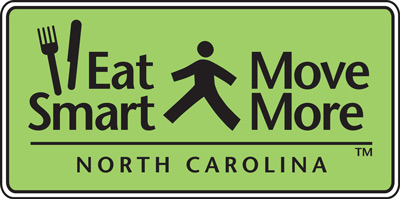The sun has just come up and the alarm is going off. It is time for an awakening of sorts. Faith community health educator Mark Bartlett gets up, puts his clothes on and purposefully places a brand new metaphorical hat on his head. Today he is a salesman.
So how did a health educator come to wear a salesman’s hat? For years, Bartlett has worked with multiple faith communities in Moore County, North Carolina to create awareness around healthy living, but it wasn’t until recently that he transformed his way of creating community behavior change.
The transformation for both Bartlett and his community came by way of the Childhood Obesity Prevention Demonstration Project (COPDP). Bartlett’s participation in the project has primarily revolved around working with the faith communities he was already so much a part of. The difference was that he now had to build a program from the ground up, something he hadn’t done before.
This project provided Bartlett with the Faithful Families curriculum, which is a complete program from start to finish. The guide tells leaders what to expect when working with churches – things to keep in mind, what works well, what doesn’t. Bartlett was especially thankful for the planning section of the guide. It gave him a foundation that enabled him to be more effective in his work.
When approaching the project, Bartlett realized that nothing of this scale had ever been implemented before within the local faith community. In the past, his work had consisted of an occasional health fair or screening clinic, but not much else. He knew that with this large of a project, he would have to do a lot of preparation to get churches on board. This meant he would have to pick out a new wardrobe of skills that would outfit him with the marketing and sales skills needed to motivate the churches.
He decided to start with the foundation that had already been set for him. He picked existing media messages. Knowing there had been a lot of information in the news about the growing rates of obesity, he tweaked his messages to make them relevant to the church members. He started by providing educational sessions at local churches. From those early conversations he became aware of a new chatter emerging within the congregations. They were saying, “Hey, we’re not in such great shape as a church or as a community.” This new awareness led to an understanding that as individuals and as faith communities, they needed to take ownership of the problem, right in their own community.
“This was really a wake up call. Locally, we saw that the state was doing something about the obesity epidemic and now we, as local communities, really needed to take some action and turn some things around for ourselves,” said Bartlett.
And take action they did. Each church came up with general goals such as members aiming to get 30 minutes of physical activity per day, eating more fruits and vegetables and making water available at all church functions. Congregants were also setting personal goals aiming to lose weight, drink less soda and sweet tea and walk more.
Now, like any good salesman, Bartlett began to look for resources that would enhance the experience of the churches he was working with. He went right to the community.
“When you are working with a large scale project like this, the more hands in the pot the better. This is a big project. It’s in the schools, the churches, worksites and hospitals. You need all of these organizations working together.”
Some of the organizations he partnered with were the local Department of Parks & Recreation and Cooperative Extension. Through these partnerships he was able to get walking trails mapped and measured as well as provide recipes to the churches to help them in their efforts to offer healthier foods.
In a very short period of time, the faith communities that have been taking part in the COPDP are already showing positive changes. These changes are so evident that other churches are contacting them inquiring how they did it and wanting to mimic their efforts.
Even though Bartlett has worked with the faith community prior to this project, he is still learning lessons.
“You have to be flexible. Abide by their calendars and schedules and that may mean nights and weekends. You are going to need help so use your resources to the best of your ability,” said Bartlett. To accommodate these lessons he has added more than a few new hats to his metaphorical wardrobe.
“Ultimately people want to be healthy and there is a definite link between physical health and spiritual health. It is our job to help people tap into it.”

